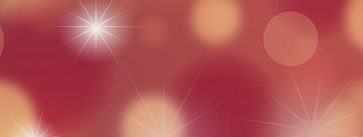Light is complex. It is much more than the opposite of dark.
Light is essential for human life.
It is widely researched in over 10,000 studies to date.
Light is a nutrient that affects the function of our cells.
Sunlight is healing
The therapeutic application of sunlight, known as heliotherapy, was popular in the second half of the 19th century. Treated in clinics, people benefited from sun therapy for rickets, infections such as smallpox and wound healing.
Research turned to lasers when they were invented. Now use of red light is coming out of the clinics and dropping in cost with new technology.
Light from the sun and from firelight emits red light as part of its spectrum. In contrast, our TV, LED lights, computer and smartphone screens emit more from the blue end of the spectrum.
Different types of light
By knowing how different types of light affect us, we can decrease any detrimental effects and use light to our benefit.
- Blue light sets our circadian rhythm, when we sleep and wake. In addition, it regulates numerous neurotransmitters and hormones.
- Ultraviolet light is what allows us to make Vitamin D from the sun. Exposure to ultraviolet light is what tans our skin as well as leads to sunburn.
- Far-infrared light we actually feel as heat. It stimulates changes in cell function and circulation.
- Red light stimulates the powerhouse of our cells, the mitochondria, to make more energy. In addition, it acts as a temporary low-dose stress which creates an anti-inflammatory, anti-oxidant, ramped-up cell defense response.
- Near-infrared (NIR) light acts on the same pathways as red light, stimulating energy production.
Light deficiencies
Living inside buildings has decreased our light exposure by more than one thousand times. It has decreased our body’s own production of Vitamin D and disrupted circadian rhythms, resulting in a myriad of health issues. Just as our health degrades eating processed food, when the light we are exposed to is too much artificial light, at the wrong time, and too little of the right kind, our health degrades.
In addition, indoors, our LED and fluorescent light bulbs emit more in the blue range of the light spectrum. Screen time fully exposes us to more and more blue light. Besides having an overall sunlight deficiency, we can get too much blue light and not enough red light.
Benefits of red light
Red light therapy is seen to have these effects:
- improve muscle performance and exercise recovery as well as enhance strength, endurance, muscle growth and fat loss
- improve cognitive performance and memory, improve mood, slow the progression of neurological disease such as Alzheimer’s
- soothe pain by blocking nerve signals and substance P as well as through its anti-inflammatory effect
- heal tendons, muscles, ligaments, fractures and skin wounds by affecting local growth factors as well as through anti-inflammatory effects
- anti-aging of the skin through collagen production and reducing wrinkles
- fat loss through the stimulation of release of fat from fat cells
Cautions
Before you head over to Amazon and buy the lowest priced red light device you find, you need to know what an effective dose is. Ari Whitten, in his book Red Light Therapy, claims that most devices are under-powered. As well, you don’t want to overdo the red light, because like anything, there is a sweet spot for dosing. Whitten has written the ultimate guide to red light therapy. I suggest consulting that if you want to buy a device.
Initially, research was done with laser lights. Through years of research, it has been determined that the effect of lasers is because of their wavelength and intensity, not the coherence of their light. Now LED lights are less expensive and just as effective for light therapy.
Red light therapy does not treat Seasonal Affective Disorder, because it is specifically the blue wavelengths that affect the circadian rhythm which is disordered. Most SAD lights use white light of sufficient intensity to make up for poor winter sunlight.
Red light therapy devices are not a replacement for sunlight. We still need to be in the sun appropriately for our health. However, red/NIR light devices can make up for our lack of sun exposure and target benefits to particular areas of the body in a way we cannot from sun exposure.
Please comment below if you use red light therapy, and what your results have been.





